The World’s Best Live Vocal Microphone
Comparing our top six live vocal mics so you can sound your very best for your audience

Author: Paul Narang
Last updated: November 2022
It hasn’t been easy, but I’ve made my decision…
When you’re choosing the best microphone for live vocals, there’s a lot to consider. The live stage is a busy environment where you have to take a host of factors into consideration if you want to ensure a really good sound:
- Reducing sound coming from other performers and stage monitors
- Reducing feedback
- Minimising handling noise
- Risk of malfunction from dropping the mic or getting it wet
- Durability for daily use and transportation
Minimising risk
Live performance is all about minimising the risk of things going wrong, so most singers and engineers are prepared to compromise a little on sound quality to achieve this.
That’s why you’ll see most vocalists with a cardioid dynamic microphone. The cardioid pattern cuts sound from everywhere but the front of the mic. This reduces feedback and minimises extraneous noise. And dynamic mics are simple and robust, with little to go wrong – perfectly suited for live use.
Condenser vs dynamic mics on stage
But this is where things get a little more nuanced. In a recording studio environment, you have the safety, and the acoustics of the optimum recording space. No stage monitors, extraneous noises, or rotten tomatoes from the rowdy audience.
You have the luxury of taking out your prized Neumann U87 condenser mic, or vintage Coles 4038 ribbon, with its specialised preamp. But depending on the qualities in your voice, you might equally reach for a cheap and dirty dynamic mic. Especially if you’re a rough and ready rock singer.
When choosing mics for live use, the higher end, more expensive mics are definitely out. These large diaphragm studio condenser mics are too sensitive for such a loud environment, and too delicate to withstand a drop, or to be carted around every day.
That’s why a cardioid dynamic mic such as the Shure SM58 has been used on stage for decades. It’s a workhorse – robust and rugged, only picking up sound from the front of the mic.
New generation of live vocal mics
The SM58 came out way back in 1966. And since then there’s been leaps and bounds in design and technology. While it still holds the top position in the public eye, there’re alternatives that are simply astounding in comparison.
Not only are there live dynamic mics that sound more like condensers, there’s condensers that have been totally redesigned to stand the rigours of live use. They’re not cheap, but if you need the best, you’re probably not expecting the lowest price.
In all honesty, it’s impossible to really identify the ‘best mic for vocals’, because every singer has a different voice. But I have picked the top five contenders, each exemplary microphones in their own right. And I’ve suggested what sort of voice each one is most suited to.
Let’s start with my personal favourite, the world’s best vocal microphone for me! I rate being able to have the full fidelity of a condenser mic on stage:
Best live vocal microphone:
Shure KSM9
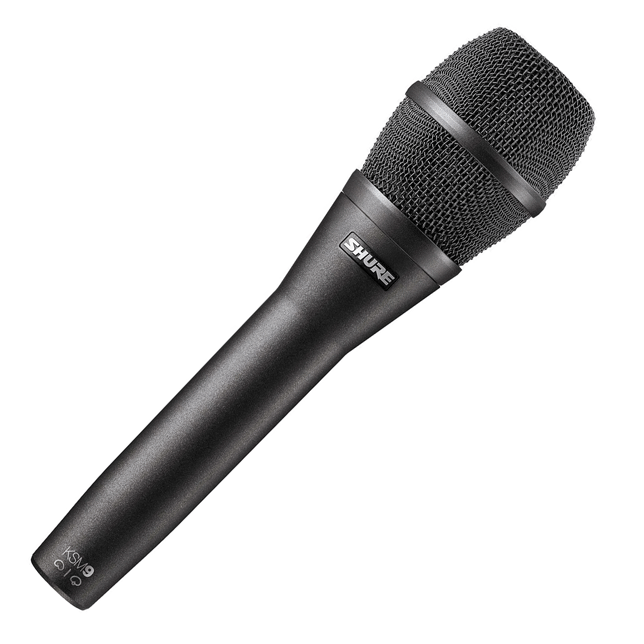
A high end vocal condenser mic built for the the live stage with two pick up patterns – cardioid and supercardioid.
The KSM9 has startlingly clear and detailed sound. A sumptuous rich low end balanced with smooth mids, and sparkling fizzy highs.
Special mention live vocal mic:
Shure Beta 58A
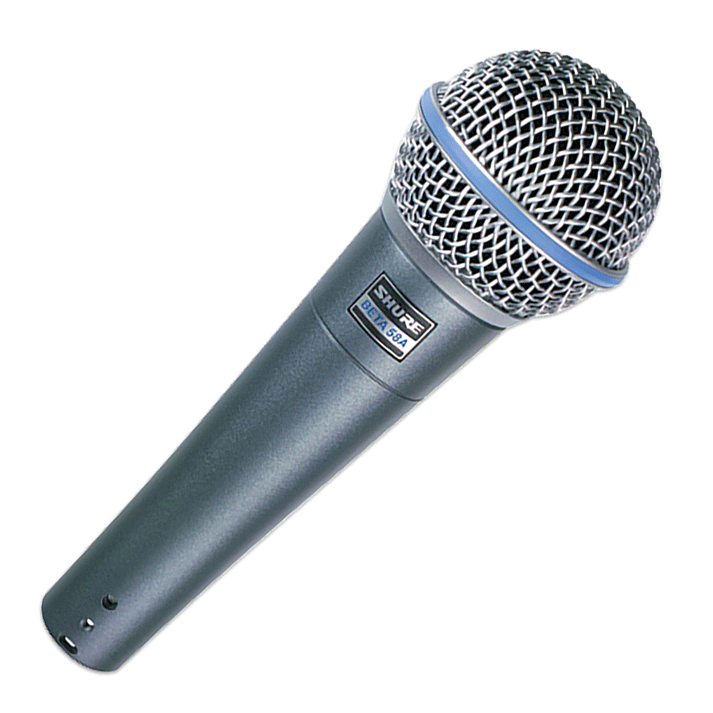
This is the upgraded version of the SM58. It’s improved with a wider frequency response for detailed sound and clarity.
It also has a super cardioid pick up pattern which minimises feedback and spill from other instruments.
Top picks for the best live studio microphones
In this round up:
1. Shure KSM9

The versatile stage mic with stunning studio quality sound

At a glance:
| Mic type | Live vocal condenser |
| Frequency range | 50Hz to 20kHz |
| Polar pattern | Cardioid and super cardioid |
The pros:
Switchable cardioid/super-cardioid
Accurate sound reproduction
Good noise rejection
Clear, detailed sound
The cons:
Expensive
Unsuited to very loud stage environments (heavy rock/metal)
What is it?
A premium-range handheld condenser vocal mic with a clear and authentic sound. This mic offers dynamic lows, balanced mids and sparkling highs.
Features
The Shure KSM9 switches between two polar patterns: cardioid and super-cardioid. This is like having two mics in one – a real bonus.
On stage, the wider cardioid pattern is suited to singers who like to move around the mic. But for noisy stage environments, a supercardioid pattern does a better job of rejecting noise from monitors and other instruments.
The dual-diaphragm design helps to reduce the proximity effect, and evens out the frequency response throughout the vocal range. And a subsonic filter helps cut out any rumble from mechanical vibrations below 17Hz.
Crucially for a live condenser, there’s also a suspension shock mount. This helps reduce handling and stand noise, as well as offering some protection to the internal circuit.
Bear in mid, this is a condenser mic, so it will need phantom power to work. This is usually supplied from the mixing desk, an audio interface, or a stand alone unit.
Shure KSM9 Frequency response
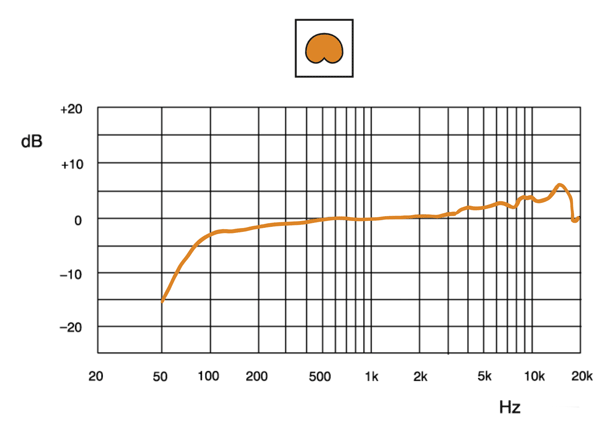
The KSM9 boasts a wide frequency range from 50 to 20,000hz. This is wider than most handheld dynamic mics, and is one of the main perks of using a condenser mic. For comparison – the SM58 only reaches 15kHz.
This mic has a very flat and even range through the mids, before gently climbing through the high range from about 3kHz. This extended high range will give your vocals that extra sparkle and clarity, and a more open authentic sound.
The chart is fairly even, with no big peaks or troughs apart from a little dip around 7kHz. It’s not something I could actually hear.
In the low range, we see a very gentle roll-off from 500Hz and below, with a sharper curve below 100Hz. This helps maintain richness and definition in the bass, without it becoming overwhelming. It also helps to counteract the proximity effect.
Verdict
There was a time when it was too risky to take high quality condenser mics onto the stage. But the Shure KSM9 has put an end to that with it’s robust design, noise and feedback rejection, and shock mount handling system.
With a decent sound system, the KSM9 is startlingly clear and detailed. It has a sumptuous rich low end that isn’t overpowering, smooth mids, and sparkling fizzy high notes.
Read the full Shure KSM9 review here
2. Shure Beta 58A

The ‘brighter’ upgrade to the Shure SM58

At a glance:
| Type of mic | Live vocal dynamic |
| Frequency range | 50Hz to 16kHz. |
| Polar pattern | Supercardioid |
The pros:
High gain before feedback
Balanced and detailed sound
Solid construction
The cons:
Sensitive to plosives
What is it?
An industry standard dynamic vocal mic with a tight supercardioid pickup pattern. The Beta 58A excels in live performance, delivering bright and clean vocals – even amidst the noisiest setup. With it’s rugged and durable construction, it’s well suited to the rigours of stage use.
Features
The Beta 58A was designed as an upgrade to their classic and popular SM58.
The Shure Beta 58A dynamic vocal mic has a supercardioid pickup pattern, which is tighter than the more common heart-shaped, cardioid polar pattern. It picks up a band of sound from the front, as well as a narrower band from the back. Sound is rejected from the back and sides.
This makes it ideal for use on stage, where you can really isolate the vocals from other noisy instruments, and minimise feedback. It’s also great for the studio when you have 2 or more singers or instrumentalists recording at the same time.
The Beta 58A is a solidly built microphone, with a metal enclosure and a hardened steel grille. The grille unscrews, giving you access to the internal electronics. It also provides access to the foam insert, for cleaning. The body of the Beta 58A has a subtle and classy blue hue, clearly distinguishing it from the SM58.
The Shure Beta 58A has a pneumatic shock mount which effectively reduces handling noise. This is ideal for vocalists who like to move around while performing. You can have fun with the 58A without worrying about creating unwanted noise.
Shure Beta 58A Frequency response
The Beta 58A has a wide frequency range of 50 Hz to 16 kHz. This is naturally narrower than condenser microphones, but ideally suited for vocals. Whether you’re a male or female vocalist, this microphone will deliver a natural, clean sound.
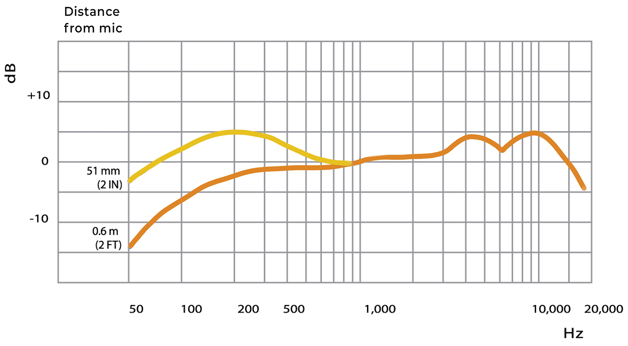
This clarity in the higher frequencies comes from two distinct peaks in the upper frequencies – one at around 3.5kHz and the other at 10kHz. This lift in presence created a natural brightness which elevates vocals within a busy mix. This is especially useful in a live setting, especially if you don’t have a live mix engineer.
Another attribute, ideal for live performance, is a gradually falling bass response below 500Hz. This ensures no boominess when using the mic at close range. If you need more bass, you can come closer to the mic – the proximity effect will raise the lower frequencies. In the chart above, the yellow line demonstrates the extra bass around 150 Hz when singing 2 inches from the mic.
Verdict
The Shure Beta 58A is a true workhorse vocal mic. It’s the go to mic for countless vocalists due to the naturally clear sound, and effortless ability to cut through the mix.
It also has some great practical qualities – the strong metal exterior easily handles being dropped on stage, and the rigours of life on the road. Built as the upgrade to the SM58, it has a pneumatic shock mount, rejects feedback, and isolates vocals from other instruments.
Read the full Shure Beta 58A review here
3. Sennheiser E935

The dynamic vocal mic with the clarity of a condenser
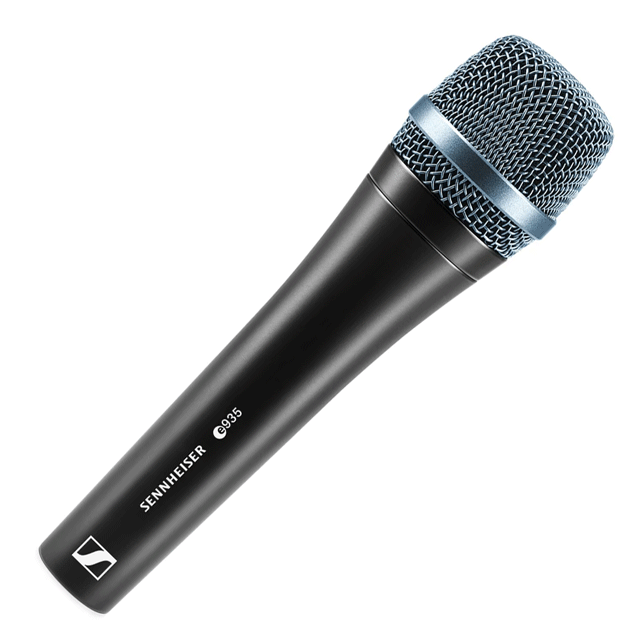
At a glance:
| Type of mic | Live vocal dynamic |
| Frequency range | 40Hz to 18kHz |
| Polar pattern | Cardioid |
The pros:
Detailed and open sound
Rugged construction
Good side rejection
The cons:
Possible sibilance on some voices
What is it?
An extended range dynamic vocal mic with a cardioid pickup pattern. This rugged microphone has a warmth and clarity ideal for live vocals. It minimises and rejects sound from the sides of the mic and keeps feedback to a minimum.
Features
Like many dynamic microphones in this roundup the Sennheiser E935 has a heart-shaped cardioid pickup pattern. It picks up sound from the front, but rejects sound from the back and sides.
This makes it ideal for use on stage, where you can isolate the vocals from other noisy instruments. It allows a little more freedom than the Shure Beta 58A (above), to move around the mic without the sound cutting out.
Inside the E935 is a humbucking coil, which effectively cancels electromagnetic hum, ensuring a nice clean signal. And an elastic capsule suspension isolates handling noise, so you can hold the mic with the confidence that it won’t interfere with the sound.
Sennheiser E935 Frequency range
The E 935 has a stated frequency range of 40 Hz to 18 kHz. This is a wide range, suitable for male and female vocals or speech.
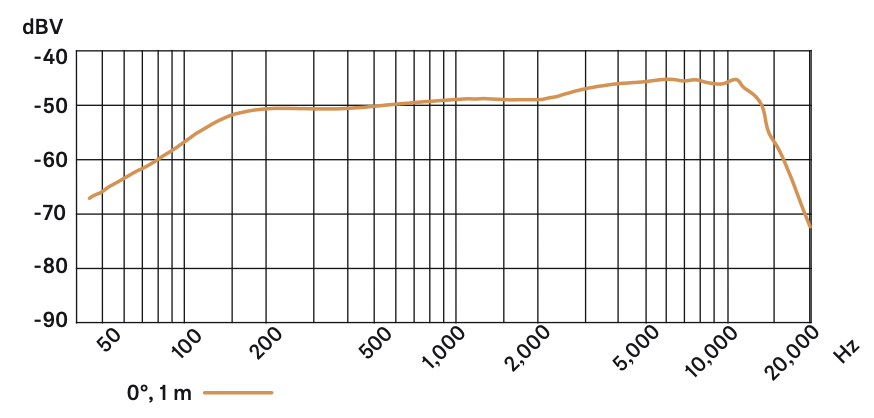
The frequency chart shows the E935 mic to have a smooth rising frequency response, lifting markedly at 2 kHz, before peaking with a little notch just above 10 kHz. From around 11 kHz there’s a decline.
Compared with the frequency chart of its predecessor, the E835, it’s smoother and brighter, with a similar overall frequency range.
Verdict
Sennheiser really seem to have got the balance right on this dynamic vocal mic. It’s an unashamedly bright microphone, but that shouldn’t be confused with harsh or brittle.
It imparts a balanced, warm sheen, exposing detail and clarity to a level more akin to a condenser mic.
The frequency response is set up for live use, with a natural rolloff in the bass, and extended presence in the higher frequencies. This mic will cut through any mix with minimum equalisation.
Read the full Sennheiser E935 here
4. Sennheiser E945

The dynamic vocal mic to cut through a mix with clarity

At a glance:
| Type of mic | Live vocal dynamic |
| Frequency range | 40Hz to 18kHz |
| Polar pattern | Super cardioid |
The pros:
Picks up only the voice
Beautifully clear and detailed sound
Solid construction
The cons:
Sensitive to plosives and sibilance
What is it?
An extended range dynamic vocal mic with a tight supercardioid pickup pattern. This makes it a good alternative to the E935 (above) if you need extra side rejection. It’s ideal for a noisy stage where the vocals really need to cut through.
Features
The Sennheiser E945 is a very similar mic to the E935. The super cardioid polar pattern makes it the best choice for really isolate your voice. It’s also more efficient at minimising feedback than the E935.
Like the E935, the E945 has that magic combination of being bright and open, but still warm and full. It delivers a natural sound which won’t need as much Eq as a warmer mic such as the Shure SM58.
So why not always choose the E945 over the E935? Because the E945 has a more limited pick up area, so you really have to stay ‘on’ the mic. Move to the side and you won’t be heard. Some singers love this, and use it as part of their microphone technique. But for others it may feel limiting.
Like the E935, the E945 has a humbucking coil, to cancel electromagnetic hum, and an elastic suspension to minimise handling noise.
Sennheiser E945 Frequency range
The E 945 dynamic mic has a stated frequency response of 40 Hz to 18 kHz. This is a wide range, suitable for both male and female vocals or speech.
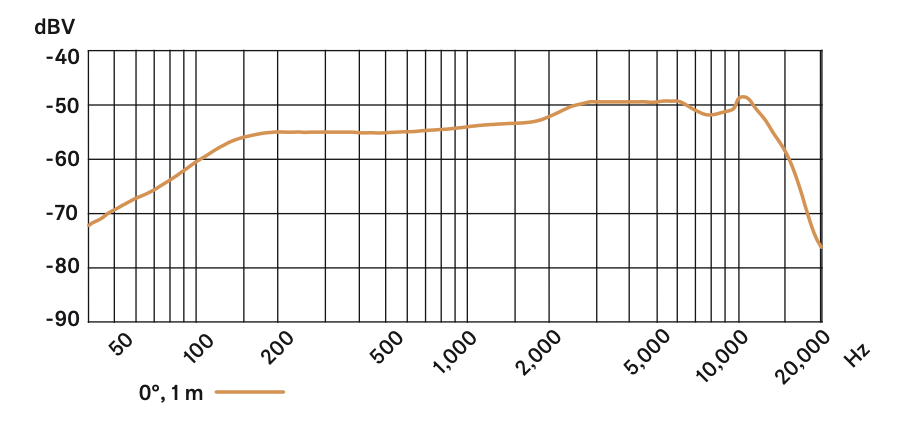
The frequency chart shows the E945 mic to have a steady rise between 150 Hz and 2 kHz, followed by a a few decibels boost until 6 kHz. At 6 kHz, there’s a sudden dip, before a narrow peak at 10 kHz.
Compared with the E935 frequency chart, it’s not as smooth. Despite this, the peak at 10 kHz really gives this mic the edge for cutting through a busy mix.
Verdict
The Sennheiser E945 is a very popular choice for live performance – built like a tank, it rejects noise from the side, and effectively fends off feedback.
The sound is balanced, with a bright revealing edge to show off all the intricacies and details of your voice. It will lift your vocals above the sound of a busy band while still retaining warmth, detail and clarity.
Read the full Sennheiser E945 here
5. Telefunken M80

A classic combo of style, sound and durability
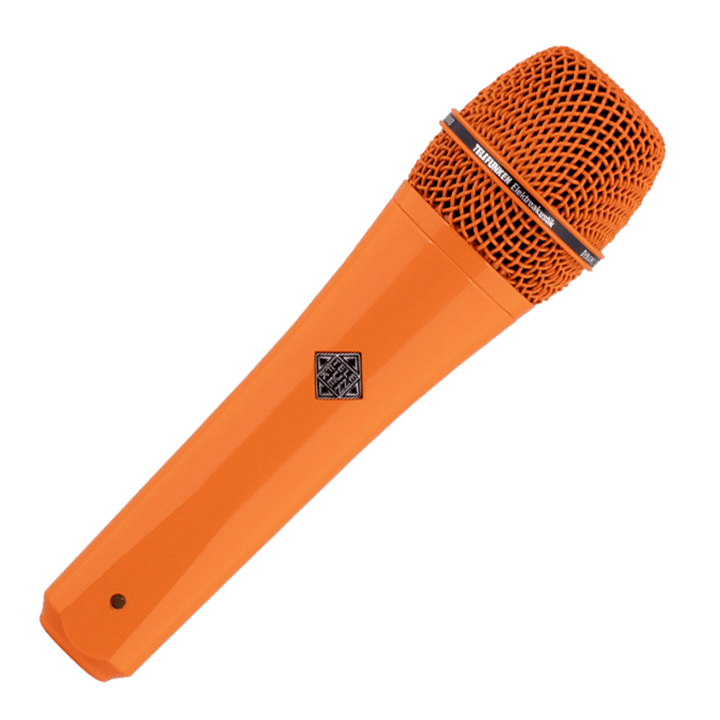
At a glance:
| Type of mic | Live vocal dynamic |
| Lowest Frequency | 50Hz – 18kHz |
| Polar pattern | Supercardioid |
The pros:
Bright, clear sound
Extended high frequency range
Excellent feedback and noise rejection
Sturdy build quality
The cons:
Pricey
Sensitive to plosives
What is it?
A mid-range handheld vocal mic with a bright, open sound. Its wide frequency range makes this a great addition to any studio, but this mic really shines on stage.
With a robust build quality and a sparkling high-end this dynamic supercardioid mic is a favourite for lead vocals and snare drums, and a perfect companion on the road.
Features
Like the Shure Beta 58A (above), the Telefunken M80 dynamic vocal mic has a supercardioid pickup pattern. This is slightly tighter than the more common heart-shaped, cardioid pattern.
This is great at rejecting feedback and stage noise, which is a must when using wedge-monitors. It can also reduce bleed from other instruments which can be annoying for in-ear monitors.
One thing to keep in mind is that a cardioid pickup pattern will pick up a small amount of noise from the rear of the mic, but this is fairly minimal with the M80.
A gentle roll-off of the low end from 200Hz does a good job of counteracting the proximity effect. This means you can sing right next to the grill without worrying too much about sound quality.
That said, the mic is rich and detailed in the low end even from a few inches away.
Inside, the M80 boasts an ultra-thin diaphragm and a specially designed low-mass capsule which reduces the proximity effect.
Telefunken M80 Frequency response
Ranging from 50 Hz – 18 kHz, the M80 boasts a wide frequency range when compared to other similar hand-held dynamic mics. This is considerably higher than the range of the Shure SM58 which only goes up to 15 kHz. This extended top-end gives vocals a sparkly, airy quality.
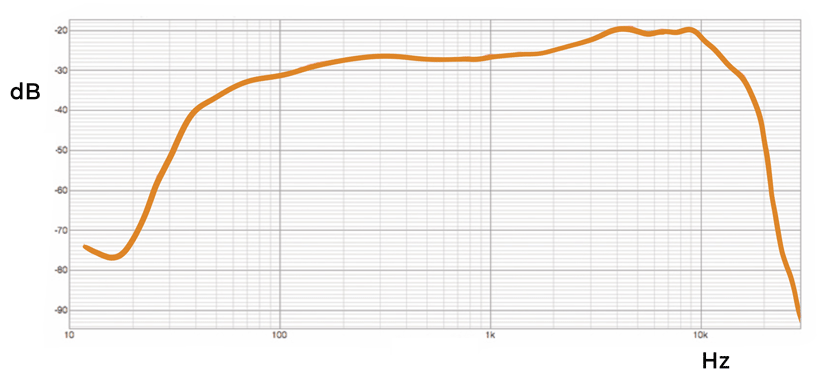
The response is fairly flat when compared to other mics, with no sharp peaks or troughs. A gentle roll-off of the low end helps combat any muddiness. There is a notable boost to the high-mids between about 4 and 10 kHz which further adds to a bright, clear sound and will allow the mic to cut through the mix.
Verdict
The Telefunken M80 is made in the USA, and built like a tank. It has a nice weight in your hands and a retro diamond logo embossed in metal on the chassis.
What strikes me about the sound of the M80 is its sparkle, clarity and openness. Despite being a dynamic mic, it has what can only be described as a condenser-like sound, due to the extended high end.
And let’s face it, style is an integral aspect of stage performance. As well as the orange model pictured here, you can pick one up in white, oak, cherry, copper and red, or classic matte black.
Read the full Telefunken M80 Review here
6. Shure SM58

The all time classic, chosen by artists throughout history
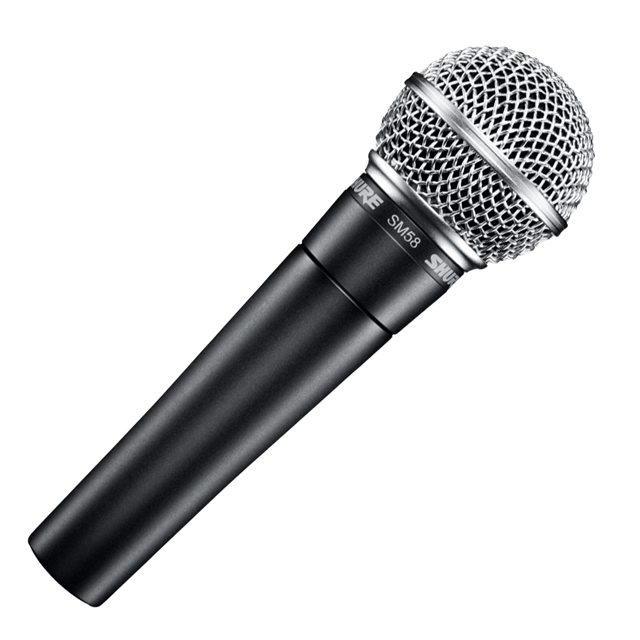
At a glance:
| Type of mic | Live vocal dynamic |
| Frequency range | 50Hz to 15kHz |
| Polar pattern | Cardioid |
The pros:
Warm, clear sound
Rugged and reliable
Incredible reputation
The cons:
Can sound too ‘warm’
What is it?
Probably the most popular vocal microphone of all time, the Shure SM58 can be heard on stages and recordings of all the great artists. The SM58 is a rugged dynamic vocal mic, famed for both warm sound and solid reliability on stage.
Features
With its die cast steel body, the SM58 is well known for its strength and longevity. These mics survive years of daily abuse at the hands of crazed rockstars on the road. They’ll withstand continuous knocks and drops, always trusted to perform when needed.
Taking the grille off reveals a spherical filter which helps to counteract any pops or plosives caused by short bursts of air. There’s also an integrated pneumatic shock mount system, insulating the capsule from any handling interference. Parts are easy to replace, so you can in theory keep an SM58 going for ever.
The design has stayed the same for decades for a reason – it works. Yes, dynamic microphone technology has come on leaps and bounds since 1966. And yes, there are more sophisticated sounding mics out there. But there’s something so attractive about a simple, rugged, moving coil dynamic mic. There’s no moving parts to go wrong – the SM58 is a performance tool you can rely on.
Shure SM58 Frequency range
The frequency response of the SM58 is especially tailored to suit a wide range of male and female voices. The frequency range extends from 50Hz to 15kHz. This is a wide range, capable of capturing most instruments or vocals, but not all frequencies are picked up equally.
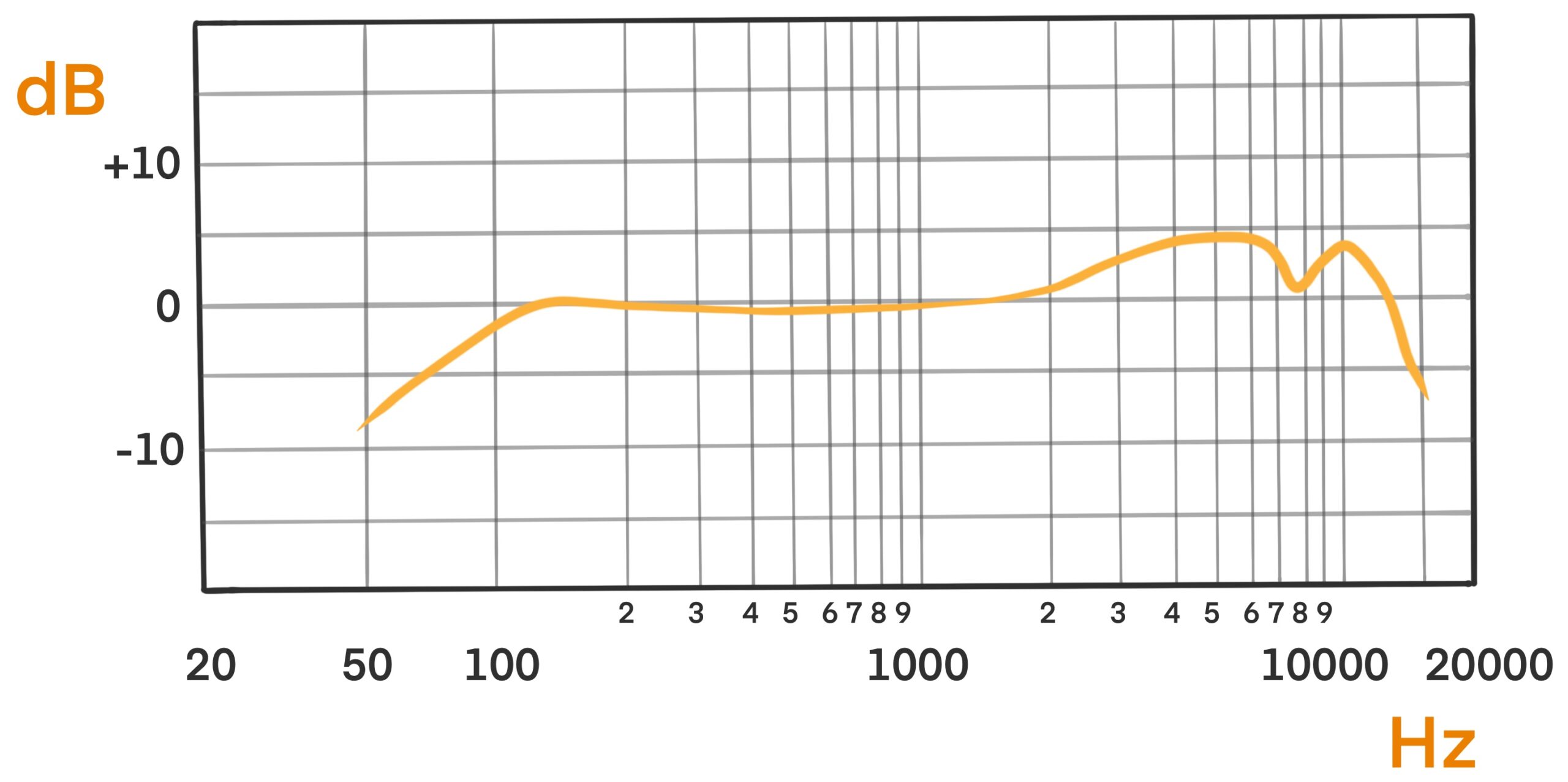
There’s a slight boost in the middle range, from 1 to 3kHz. This is what gives the SM58 a full sound, and helps to classify it as a ‘warm’ mic.
Further up the frequency chart, a boost of 5dB at 4-6Khz, provides presence. This adds to the clarity and definition in the sound.
At the top end of the frequency chart, we see a 4dB boost at 10kHz. This is the domain of pure harmonics. The boost here provides an airiness and natural lift, giving your voice that subtle sparkle.
Although the SM58 is clearly designed, and used as a vocal mic, the frequency response is also suited to recording a range of musical instruments. They sound fantastic on guitar amps, drums, and other bright and loud sound sources such as brass instruments.
Verdict
The SM58 has slightly less top end than a similar mic such as the Shure Beta 58A above. While this may sound like a limitation, it can actually be very useful for rejecting feedback on stage.
The SM58 is particularly good at rounding off any harshness and delivering warm, vibrant vocals.
Some of the reasons the SM58 is so popular for live vocals:
- low feedback on stage
- cardioid pick up pattern rejects sounds to the side
- built in foam pop filter
- very low handling noise
- built like a tank
- rounded, refined sound
- handles very high SPL levels
- low price point
Another consideration – it’s a good mic to get used to, as you’re likely be handed an SM58 when you appear at a venue you don’t know. Similarly, if you take your SM58 to an open mic, or to guest with a band, the engineer will already be familiar with it.
There’s other alternatives, with much higher spec, but they cost far more, and won’t necessarily improve your sound. If you’re buying your first pro-level vocal mic, the SM58 should definitely be on your audition list.
Conclusion
I hope this exploration of the best live vocal mics has helped you narrow down your choices. Every mic on this list is good, so it will come down to your personal preference, needs, and the qualities of your voice.
Try as many mics as you can, on stage or in the studio, to get an idea of how they’re sounding with your vocal style.
If you want a deep dive into the different types of microphones, how they work and which one you should be using for your best sound, take a look at this guide.
Or if you’re considering setting up a home recording studio, you’ll find all you need to know here.
